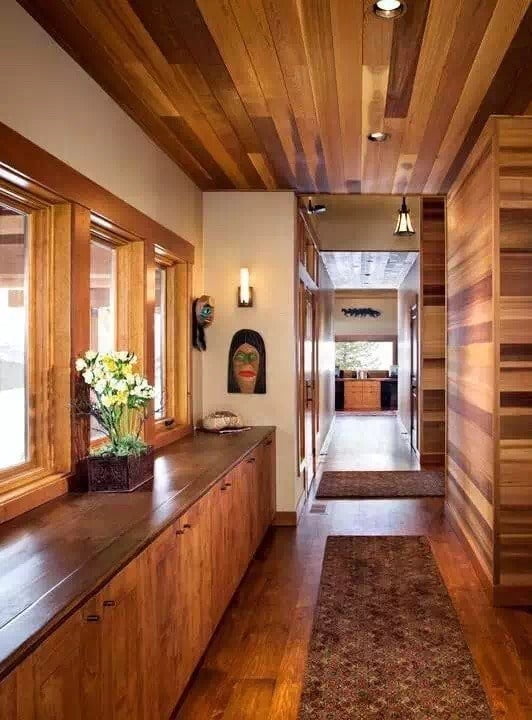Table of Contents
Cedar Wood is a softwood with a spicy aroma and natural insect-repelling capabilities used for preparing cedar oil, fencing, siding, boat building, musical instrument making, decking, high-quality furniture making, and many more.
✔ Because of its high durability & quality, it is also utilized for harsh weather and external application.
Scientific Detail of Cedar Wood
| Genus | Coniferous Trees |
| Plant Family | Pinaceae |
| Sub-Family | Abietoideae |
✔ The Cedar is not a wood of a specific species. Instead, Cedar contains 15 species of wood. They are very near to each other, and they are unique in features of colour, hardness, and rot resistance. They are utilized based on their properties.

✔ Its dark colour, light-weight, and soft texture make it more beautiful and demanding.
It is utilized for fencing, decking, siding, and many other applications. Due to its aromatic properties, It is also used for clothing storage and oil. It is famous all over the world.
Some common details of Cedar Wood
| Wood Color | Pinkish-red colour to dark colour |
| Tree Height | The height of Cedar is 130-160 ft. (50 m). |
| Found at | Native to the high-altitude mountains of the western Himalayas and the Mediterranean region. |
| Uses of Cedar | Cedar oil, fencing, siding, boatbuilding, musical instruments, decking, furniture, and many more. |
| Finishing | Cedar has good finishing qualities. |
| Workability | It is easy to cut and shape. Great workability properties. |
| Types | Softwood |
| Availability | It is easily found in many regions |
| Durability | It is highly durable. |
1. Properties of Cedar Wood
Some important properties of Cedar Wood are:
1. Open cell structure of cedar wood makes it less dense than other softwoods. This also helps in easy handling and mobilization.
2. Because of constant density, this wood is able to resist problems like swell, warp, cup, and twist than other soft & hardwoods.
3. It has a soft texture.
4. It has a low shrinkage factor and high decay resistance.
5. It has good thermal and insulating properties.
6. It has high ability to dampen vibrations.
7. It has a low flame-spread rating.
8. Absence of pitch or resinous extractives.
2. Types of Cedar
I. Based on Botanists
According to botanists, there are four types of Cedar Wood:
a. Cedrus Deodara – The deodar cedar – Western Himalaya.
b. Cedrus Libani – The Lebanon cedar – Lebanon and Turkey.
c. Cedrus Brevifolia – The Cyprus cedar – Cyprus.
d. Cedrus Atlantica – The Atlas cedar – Morocco and Algeria.
These are the natural locations of the different species of Cedar, but its cultivation is done in different parts of western Europe, Australia, New Zealand, Southern Asia and North America.
II. Normal Cedars
Cedars that are commonly used are:
a. Deodar Cedar

b. Eastern Red Cedar

c. Western Red Cedar

d. Atlas Cedar

e. Cyprian Cedar

f. Northern White Cedar

g. Alaska Cedar

h. Spanish Cedar

i. Lebanon Cedar

j. Eastern White Cedar

3. Cedar Hardwood or Softwood
Because of its unique properties, most people think that Cedar is hardwood.
In reality, it is softwood with a spicy aroma and natural insect-repelling capabilities.
4. Uses of Cedar Wood
The uses of cedar wood are as follows:
1. It is used for clothes storage.
2. It is used for cladding purposes.
3. It is used for making ceilings.
4. It is used for preparing cedar oil.
5. It is used in the making of fencing, siding, boatbuilding, musical instruments, decking, furniture, and many more.
6. It is used in interior panelling in rooms.
5. Advantages of Cedar Wood
The advantages of cedar wood are as follows:
a. It is light in weight.
b. It has excellent workability.
c. It can be found in both cheap and expensive depending upon the species of Cedar.
d. It can be found anywhere in the market and is famous worldwide.
e. It provides aesthetic beauty.
f. It can easily withstand high temperatures.
g. It is more durable than other types of wood.
h. It has a low shrinkage factor and high decay resistance.
i. It has good thermal and insulating properties.
j. It has a high ability to dampen vibrations.
k. It has a low flame-spread rating.
6. Disadvantages of Cedar Wood
The disadvantages of cedar wood are as follows:
a. It requires regular maintenance.
b. The colour fade away due to chemical reaction.
c. Cedar is sensitive wood.
d. It is weak to use as construction material.
| Read Also: Length of Steel Bar |

